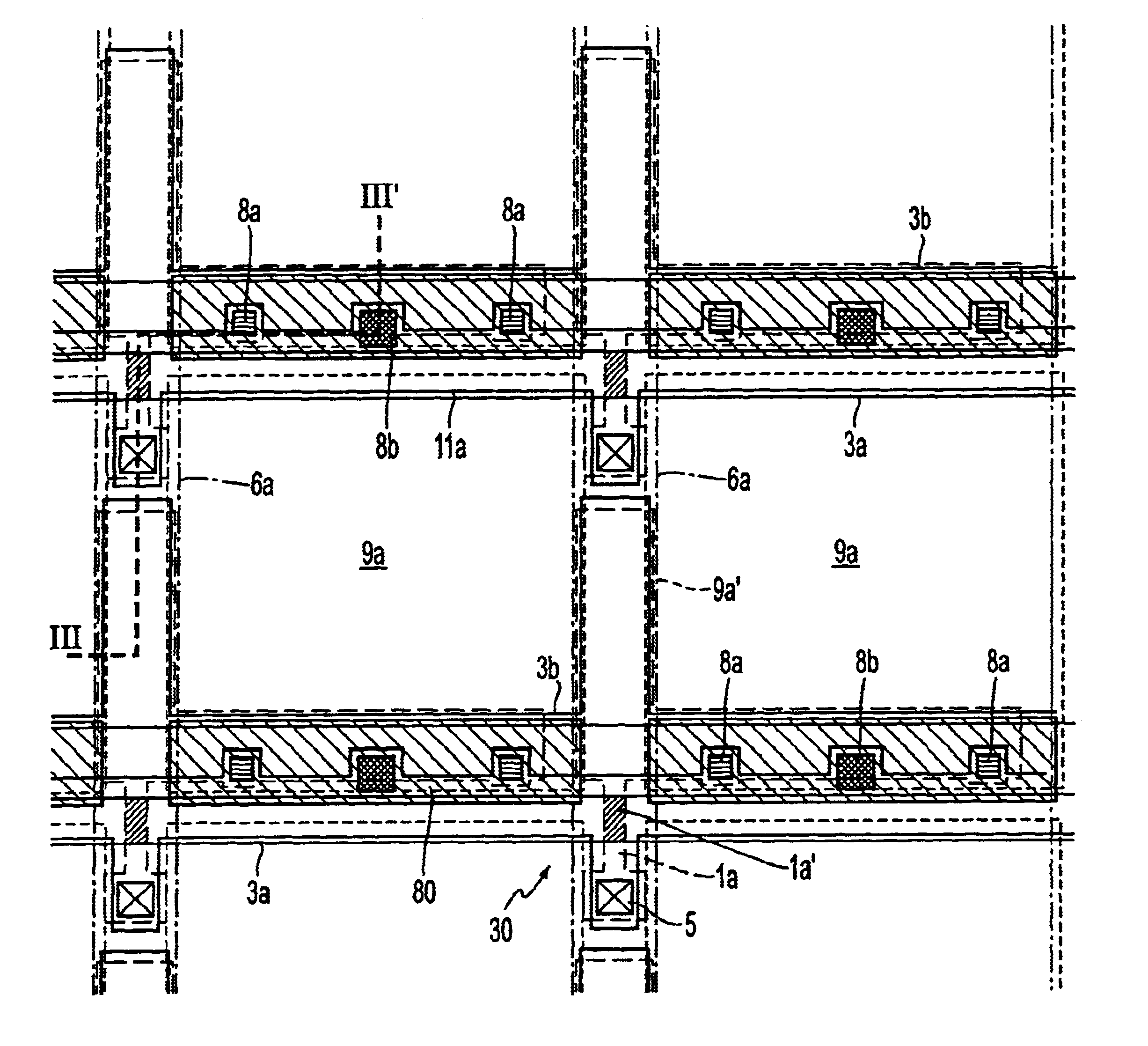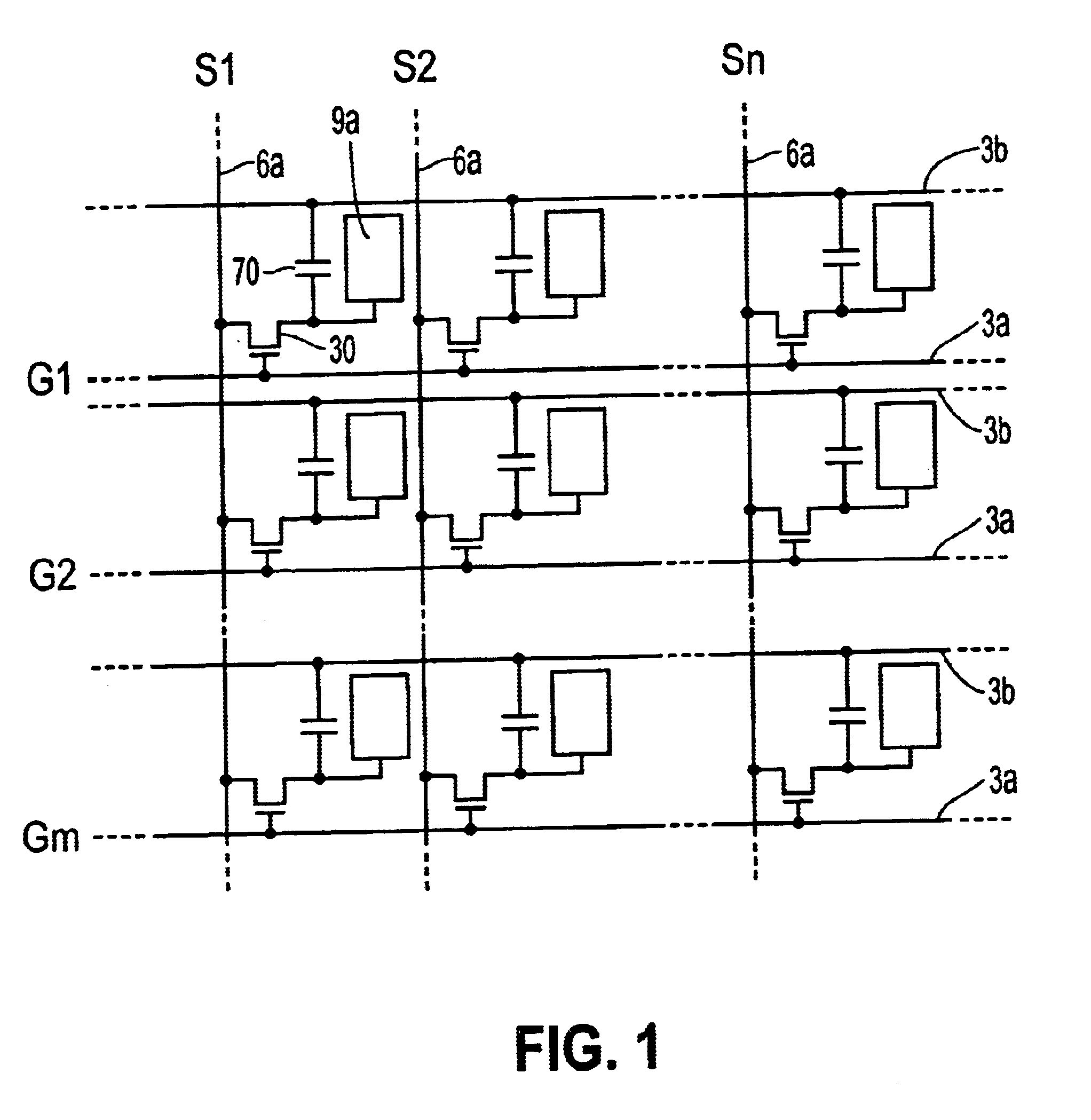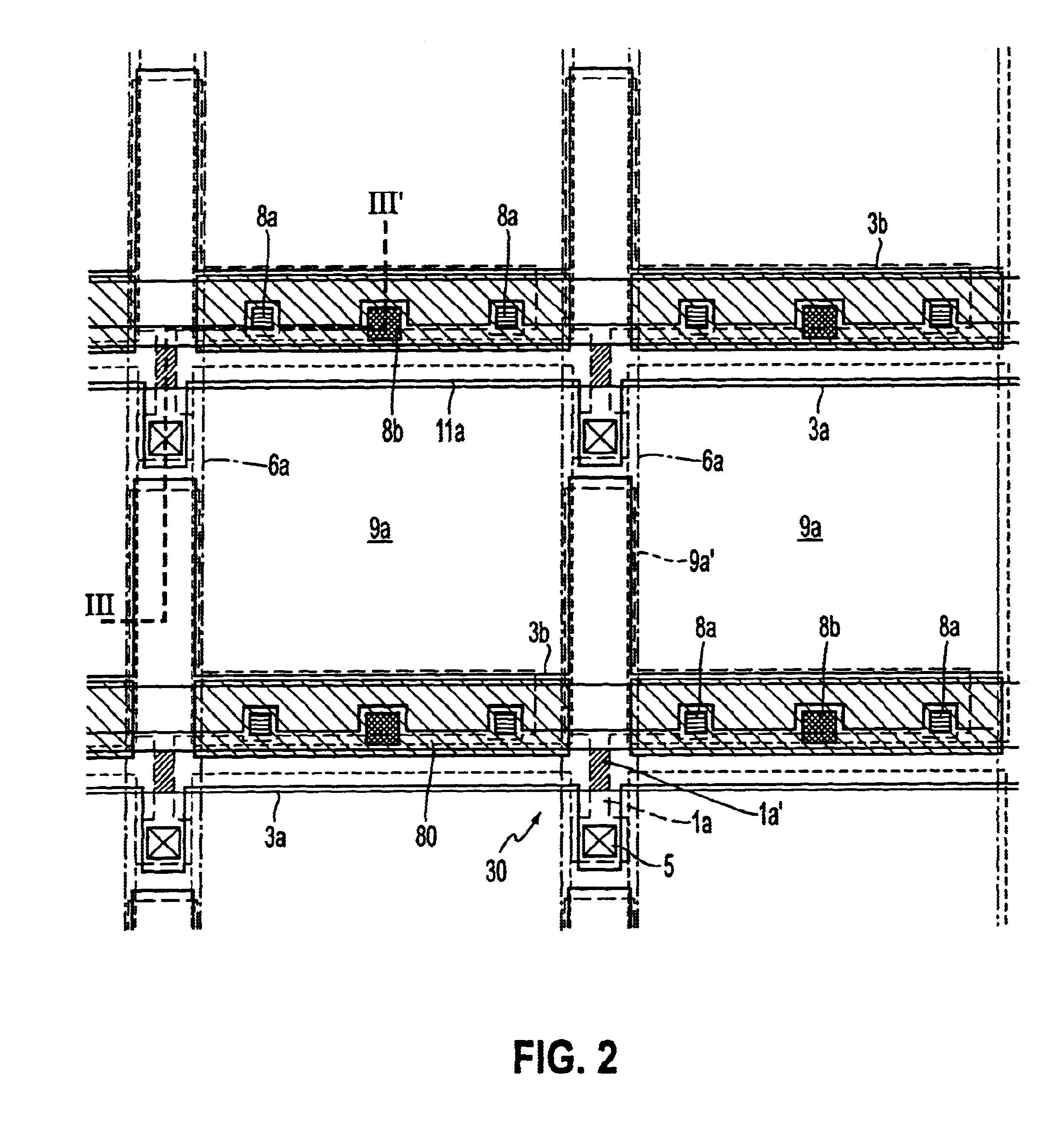Electro-optical device having a symmetrically located contact hole and method of producing the same
a technology of symmetrical location and contact hole, which is applied in the direction of semiconductor devices, radio frequency controlled devices, instruments, etc., can solve the problems of difficult formation of contact holes, inability to etch accurately, and inability to produce the same,
- Summary
- Abstract
- Description
- Claims
- Application Information
AI Technical Summary
Problems solved by technology
Method used
Image
Examples
first embodiment
Process of Producing First Embodiment of the Electro-optical Device
A description will now be given of a process for producing the liquid crystal device of the embodiment having the described structural features, with reference to FIGS. 4 to 7. In FIGS. 4 to 7, the layers on the TFT array substrates are shown at different steps of the process, in sectional views similar to that shown in FIG. 3, i.e., in a sectional view taken along the line III--III of FIG. 2.
Referring first to FIG. 4, in particular Step (1), a TFT array substrate is prepared from, for example, quartz glass, hard glass or silicon. Preferably, the TFT array substrate is heat-treated at a high temperature of about 900.degree. C. to about 1300.degree. C. in an inert gas atmosphere such as of N.sub.2 (nitrogen). This pre-treatment reduces any distortion or strain of the TFT array substrate 10 which may be caused in subsequent high-temperature process. More specifically, the pretreatment is conducted by heating the TFT ar...
second embodiment
of Electro-optical Device
A description will now be given of a liquid crystal device which is a second embodiment of the electro-optical device of the present invention, with specific reference to FIG. 8. FIG. 8 is a plan view of a TFT array substrate used in the second embodiment, carrying data lines, scanning lines, pixel electrodes, light-shielding films and so forth formed thereon, showing particularly a group of adjacent pixels. In FIG. 8, components or elements that are the same as those used in the first embodiment shown in FIG. 2 are denoted by the same reference numerals as those employed in the description of the first embodiment, and description of such components or elements is omitted.
Referring to FIG. 8, the contact hole 8a in the second embodiment is formed in the portion of the non-aperture region extending along the scanning line 3a, at the side of the capacitance line 3b contacting the aperture region, unlike the contact hole 8a in the first embodiment. Other portio...
third embodiment
of Electro-optical Device
A description will now be given of a liquid crystal device which is a third embodiment of the electro-optical device of the present invention, with specific reference to FIGS. 9 and 10. FIG. 9 is a plan view of a TFT array substrate used in the third embodiment, carrying data lines, scanning lines, pixel electrodes, light-shielding films and so forth formed thereon, showing particularly a group of adjacent pixels. FIG. 10 is a sectional view taken along the line X--X of FIG. 9. In FIG. 10, layers and elements are shown at different scales of magnification in order to make them recognizable on the Figure. In FIGS. 9 and 10, components or elements that are the same as those used in the first embodiment shown in FIGS. 2 and 3 are denoted by the same reference numerals as those employed in the description of the first embodiment, and description of such components or elements is omitted.
Referring to FIGS. 9 and 10, the third embodiment employs a combination of a...
PUM
 Login to View More
Login to View More Abstract
Description
Claims
Application Information
 Login to View More
Login to View More - R&D
- Intellectual Property
- Life Sciences
- Materials
- Tech Scout
- Unparalleled Data Quality
- Higher Quality Content
- 60% Fewer Hallucinations
Browse by: Latest US Patents, China's latest patents, Technical Efficacy Thesaurus, Application Domain, Technology Topic, Popular Technical Reports.
© 2025 PatSnap. All rights reserved.Legal|Privacy policy|Modern Slavery Act Transparency Statement|Sitemap|About US| Contact US: help@patsnap.com



